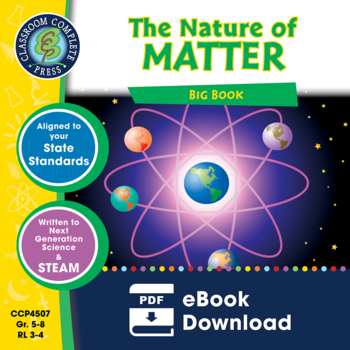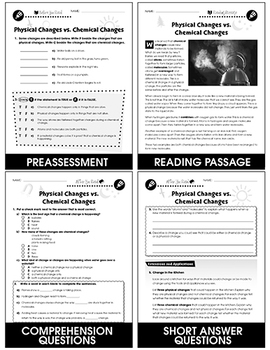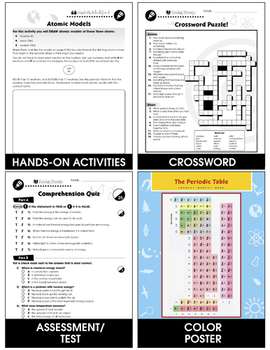The Nature of Matter BIG BOOK - Bundle
- Zip
What educators are saying
Products in this Bundle (3)
Bonus
Description
You don't have to be a rocket scientist to understand matter and energy with our Physical Science 3-book BUNDLE.
About this Resource:
Students discover what matter is with Properties of Matter. Identify atoms, particles and molecules before exploring the three states of matter. Experiment with photosynthesis, an important chemical change. Then, explore the invisible world of Atoms, Molecules and Elements. See how the atomic model is made up of electrons, protons and neutrons. Get comfortable with the periodic table by recognizing each element as part of a group. Finally, unlock the mysteries of Energy. Dissect mechanical energy by identifying the different points on a roller coaster as using kinetic or potential energy. Measure the speed of sound in a group experiment. Each concept is paired with hands-on activities and experiments.
Aligned to the Next Generation Science Standards and written to Bloom's Taxonomy and STEAM initiatives, additional crossword, word search, comprehension quiz and answer key are also included.
************************************************************************
View Individual Titles:
► Properties of Matter Gr. 5-8
► Atoms, Molecules & Elements Gr. 5-8
************************************************************************
Check out our sister TPT shops:





